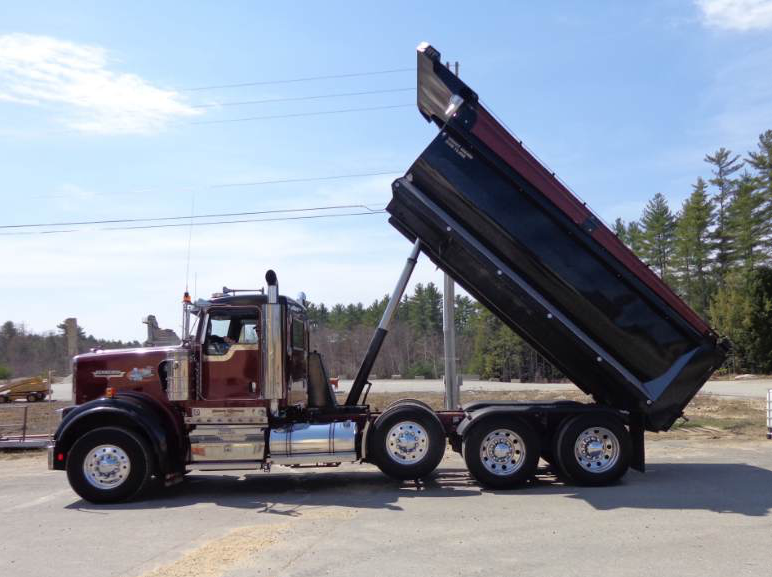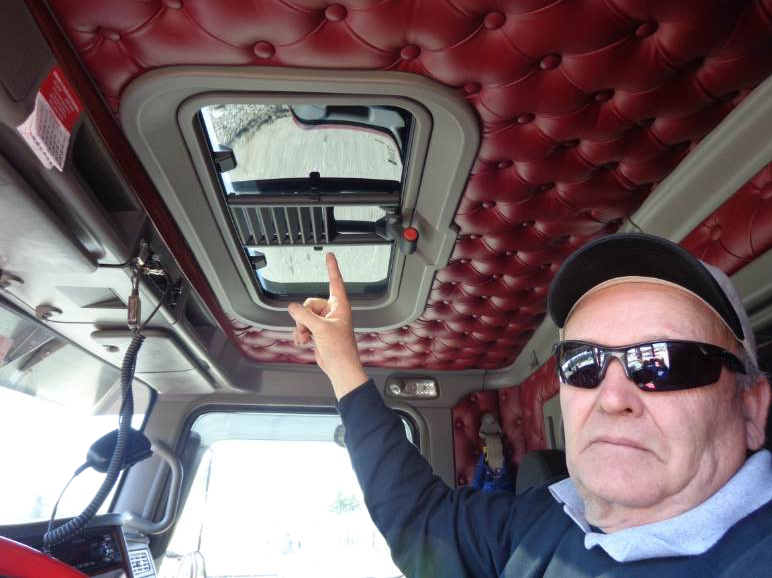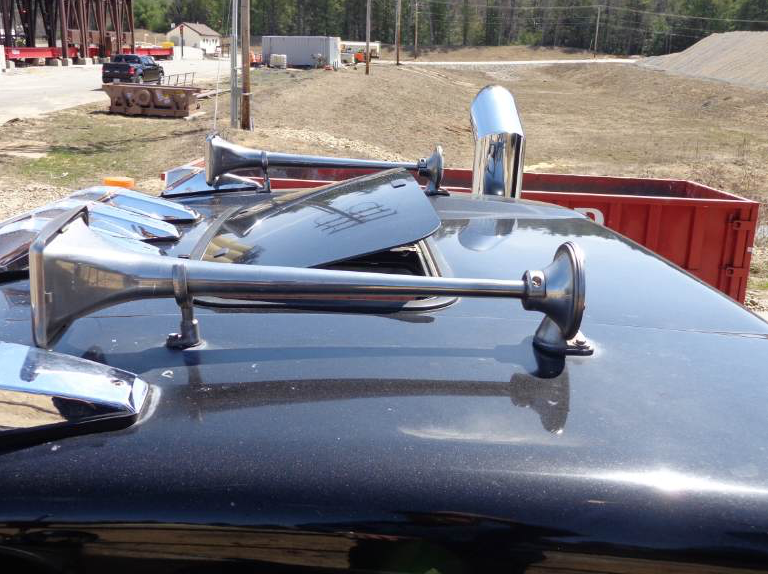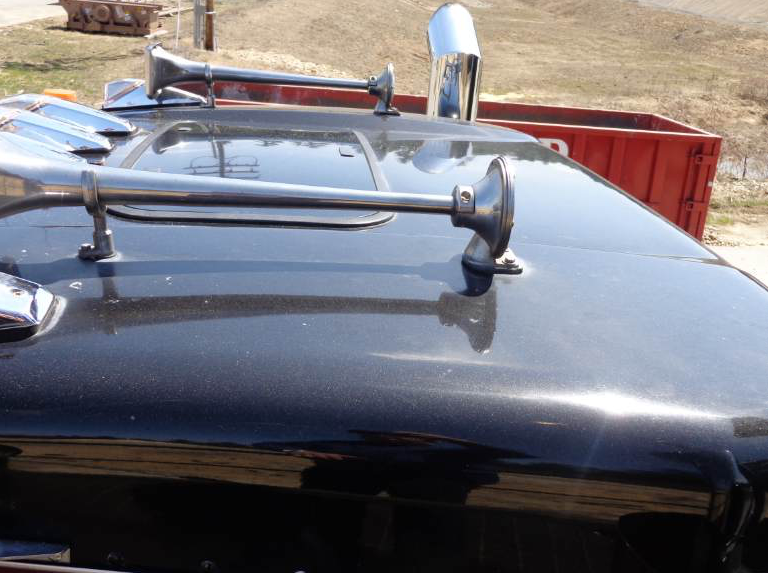Use a Sunroof to Spot Overhead Obstructions
BY Sandy Lender

Save on Costs with Your Professional Guide to Asphalt Mix Delivery
Part 2—Put in an Eye to Safety
For the 2017 paving season, we dive into an essential area of project management for asphalt professionals: safe and timely delivery of hot-mix or warm-mix asphalt (HMA/WMA) to the paving site. During this eight-part series, you’ll get some back-to-basics best practices to share with veteran and new haul truck drivers, in addition to new tips, ideas, and case studies with logistics and technology that will enhance your bottom line. Producers have streamlined processes at the plant; contractors have nailed down best practices in the work zone. Now it’s time to harness the potential you’ve been missing when it comes to mix delivery and haul truck fleet management.

Here Steve Murray of Steve Murray Trucking, Hooksett, New Hampshire, points to the sunroof he had installed for safety on his truck. All photos courtesy John Ball, Top Quality Paving & Training, Manchester, New Hampshire.
This installment looks at the roof of the haul truck cab. That might sound odd at first, but think about the dangers overhead that the haul truck driver doesn’t see when he’s sitting behind the wheel.
The paver operator, dump man and screed operators are tasked with watching the hopper, the head of material, the movement of mix out of the truck body, the mat behind the screed and much more. Their attention is typically focused downward, not up. If the paving train moves forward at 20 feet per minute, the paver may push the truck, with its body in the air, right into a mature tree branch or—worse—into live wires. The downtime involved when a truck gets tangled up in wires amounts to thousands of dollars at best, serious injuries at worst.
If your haul truck gets tangled up in wires, the National Institute for Occupational Safety and Health (NIOSH) best practices recommend that you do not exit the truck. Stay inside and don’t reach out. Other crew members should not approach the truck and should not attempt to untangle wires.

Open sunroof
A member of the crew will contact the utility company, of course, but will also contact emergency responders to assist. Trying to exit the cab before the utility company has ensured power has been cut off to the affected wires can result in serious injury or even death.
Some companies have wisely implemented the use of fluorescent-green colored safety cones with the word “danger” painted on them to designate utility poles with overhead hazards and the like.
This doesn’t mean a dangerous situation is resolved. Truck drivers still need to be on the lookout for dangers overhead.
When independent haul truck driver Steve Murray wanted extra safety, he installed a sunroof in the cab of his truck. For the reasonable cost of about $750, Murray made it possible to see overhead obstructions and hazards from the driver’s seat.

Sunroof closed
“I can see wires, trees, branches,” Murray said. “It’s the best investment I ever made.”
When he’s on a job, he doesn’t have to rely on overworked and overwhelmed ground personnel to watch out for him; he can see what’s above his truck and act accordingly to prevent mishaps.
While he stated that each job “needs a guy on the ground watching the overheads,” he has peace of mind now that he can see above the cab for himself.
“Now I don’t have to worry about whether the guy on the paver is distracted.”
